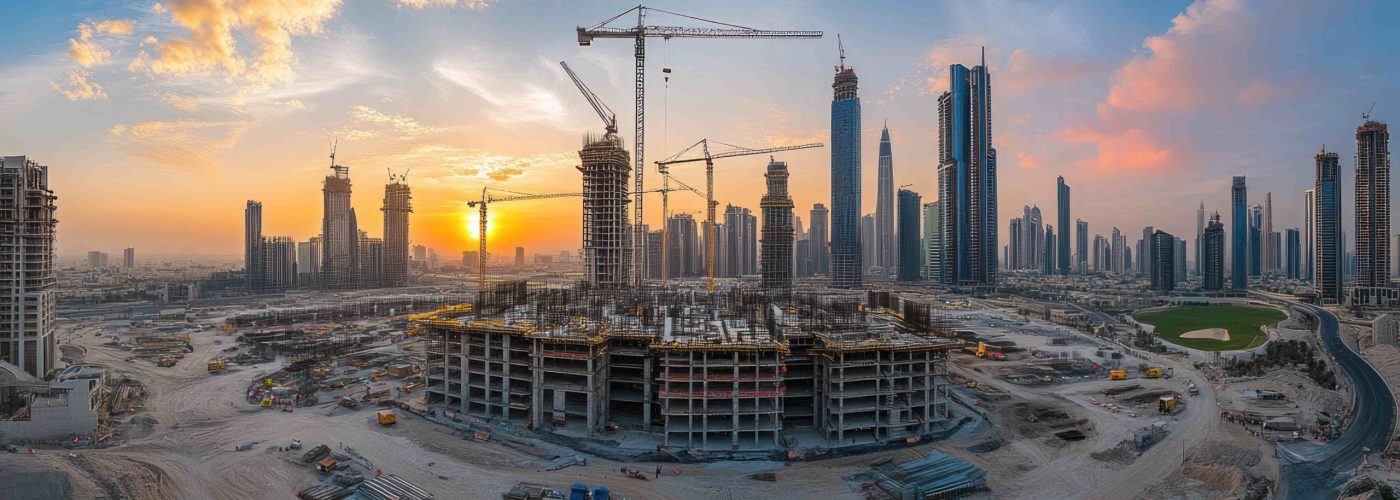Building large commercial projects requires careful planning, attention to detail, and a clear focus on what businesses and communities need. In 2025, successful developments will depend on strategies that ensure these spaces are functional, sustainable, and appealing. Whether it’s a shopping center, an office building, or a mixed-use complex, certain factors are essential to creating a valuable and efficient project.
Understanding Market Needs
Every commercial project should match the current needs of the market. Developers must analyze trends and identify gaps. With more companies adopting hybrid work models, flexible office spaces and shared amenities are becoming more popular than traditional office layouts.
The location of a project plays a major role, too. In cities, commercial construction projects might benefit from public transportation access, while suburban developments often require features like ample parking facilities and community-focused areas. Tailoring the project to its specific market ensures better results.
Developers should also consider the type of tenants they aim to attract. For instance, technology companies may prioritize spaces with advanced connectivity and energy-efficient designs, while retailers might focus on high-traffic locations and visibility. Understanding these preferences is key to crafting spaces that meet tenant demands.
Following Rules and Regulations
Meeting legal requirements is crucial for large projects. Developers must know and follow zoning regulations, building codes, and environmental regulations where the commercial construction takes place. Breaking these rules can cause expensive delays, fines, or even cancel the project entirely.
Many areas now focus on sustainability. Developers are expected to include energy-efficient designs, manage waste responsibly, and consider renewable energy options. Earning certifications like LEED not only helps meet legal standards but also makes the project more attractive to environmentally conscious investors and tenants.
Regulatory changes can also occur mid-project, adding challenges. Developers must stay updated on any new laws or policies to ensure compliance throughout the construction and operational phases.
Focusing on Sustainability and Strength
Developers must prioritize sustainability by incorporating eco-friendly materials, energy-efficient systems, and responsible construction practices. These efforts reduce environmental impact and meet the growing demand for greener office buildings.
Projects in areas prone to natural disasters, such as earthquakes or hurricanes, need strong designs and safety features. These measures protect both the investment and the people who will use the space in the future. Developers should also consider features like water conservation systems and sustainable landscaping to reduce long-term operational costs.
In some cases, where there is ample land, ground mounted solar panels in the UK or in your country could be a valuable addition. These systems can help future-proof any real estate development by reducing energy costs and contributing to sustainability goals. Construction companies may need to collaborate with experienced providers of ground-mounted solar panels to design and install the ideal array to power the new building efficiently.
Designing Flexible Spaces
A good commercial development can adapt to changing needs. Flexible spaces attract tenants from different industries and support various business models. Mixed-use developments, which combine housing, shopping, and recreational spaces, are a great example of this adaptability.
For instance, creating modular office designs or spaces that serve multiple purposes can keep a property relevant for years to come. This flexibility helps owners adjust to market changes and maintain value over time. Adding features like co-working spaces or pop-up retail areas can further increase tenant interest.
Ensuring Strong Infrastructure and Easy Access
Good infrastructure is key to any project’s success. Roads, utilities, and public transportation should connect easily to the development. Accessibility for people with disabilities is also an important consideration.
Modern technology enhances infrastructure. Features like smart parking systems, energy-saving tools, and reliable internet connections are becoming standard. Offering these conveniences increases tenant satisfaction and attracts high-quality clients.
Future infrastructure needs, such as electric vehicle charging stations and 5G network readiness, are essential to ensure developments remain relevant as technology advances.
Planning Finances and Managing Risks
Careful financial planning is essential for large projects. Unexpected costs, supply chain problems, or legal challenges can disrupt even the best plans. Developers need detailed budgets, contingency funds, and expert advice to stay on track.
For example, working with professionals to identify potential risks early can prevent problems later. Flexible financing options also provide stability during economic ups and downs and help the project move forward without compromising quality. Maintaining transparent communication with investors and stakeholders ensures confidence and support throughout the project.
Engaging With the Community
Large developments affect local communities. Strengthening your community engagement with residents and stakeholders early helps address concerns and gain support. Developers can hold public meetings to gather input and show how the project benefits everyone.
Adding parks, walking paths, or community centers enhances the appeal and functionality of the development, especially in business districts. These additions improve quality of life for residents and fulfill social responsibility goals for the project. Developers who demonstrate a commitment to the local community often experience smoother approval processes and stronger partnerships.
Using Modern Technology
Technology plays a big role in today’s commercial spaces. Smart building features like automated lighting, climate control, and security systems are now common. Renewable energy options, such as solar panels, also help reduce operational costs.

Artificial intelligence and data analytics optimize energy use, predict maintenance needs, and enhance tenant experiences. This makes them valuable tools for modern developments. Staying updated on technological advancements keeps projects competitive and relevant. Developers should also explore integrating digital tools that allow tenants to manage spaces efficiently, such as mobile apps for booking shared amenities or reporting maintenance issues.
Final Thoughts
Successful commercial developments in 2025 will balance market needs, legal requirements, and financial planning with sustainability and innovation. Developers who design adaptable spaces, engage with the community, and use the latest technology will create valuable and functional projects.
Careful planning ensures these developments meet the needs of businesses and communities, setting them up for long-term success. A focus on quality, flexibility, and collaboration will help developers create spaces that thrive in an ever-changing market.





